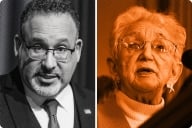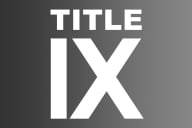You have /5 articles left.
Sign up for a free account or log in.
This past summer, the Trump administration’s Department of Education repealed the controversial gainful-employment regulation, which required all programs at for-profit universities as well as career-oriented programs at nonprofit schools to meet a quantitative threshold to remain eligible for federal financial aid. The repeal received significant attention from the news media and higher education officials. Advocates for the proprietary college sector generally hailed the repeal; consumer groups railed against it.
But an equally important gainful-employment story has garnered little attention. A sizable study of programs run by for-profit colleges, conducted by researchers at Seton Hall University, found last month that “passing GE was associated with a lower likelihood of a program or college closing.”
This suggests that the GE regulation, before its demise, achieved one of its stated policy goals: encouraging for-profits to examine with more intention the financial return of their programs for students.
I believe the gainful-employment regulation imposed reasonable constraints and accountability standards on proprietary institutions, notwithstanding the fact that I led a for-profit university for years. While its debt-to-earnings metric was an imperfect proxy for academic quality, in my view, the rule’s repeal by the Trump administration is misguided.
The Background
From roughly 2000 to 2010, many nontraditional universities, including many for-profit institutions, gained popularity among working adult students, expanding their enrollments and taking an increasing share of federal financial aid dollars.
Critics of the for-profit sector attributed the growth to the fact that the schools were spending excessively on student recruitment. Advocates for the sector said the growth was driven by the fact that these universities were offering online learning and other innovations that improved access for working adult students. Indeed, some for-profit universities offered high-quality degree programs and credentials that prepared graduates for careers in important service fields like nursing, social work and teacher education.
Both sides’ arguments were, by and large, true.
That said, the proprietary higher education sector faced mounting scrutiny and pressure due to the fact that the institutions, in aggregate, had a higher cohort default rate on federal student loans than nonprofit schools did. Journalists and policy makers painted the sector with a broad brush, focusing their attention on the actions of several prominent bad actors.
Because of their scale and behavior, it became axiomatic, though inaccurate, in the public discourse that all for-profits were “predatory” in their consumer and commercial practices. That caricature -- like most -- had some semblance of truth in that it represented how some of these poor-performing schools acted. Some of those schools are now defunct, and not missed. However, the caricature -- again, like most -- failed to reflect the diversity and breadth of the for-profit higher education sector.
During this period, I led Walden University, which had an exceedingly low student loan default rate compared to the national average for all universities, not just relative to the for-profit sector. My colleagues and I were concerned about the marketing practices and academic quality at several of the prominent for-profits and how this could be twisted to generalize about the entire sector.
Most critics failed to discriminate among the universities, including those, like Walden, that offered high-quality academic programs and served a sophisticated graduate student market. Along with some others in the sector, I believed that regulators needed to put measures in place to ensure greater quality and more manageable student indebtedness -- and advised public officials accordingly.
The Regulation and Its Impact
As observers know well, the Department of Education under President Obama established the GE regulation to ensure that programs at for-profit schools didn’t result in excessive debt relative to a graduate’s income. The rule’s specific measure was not ideal, and a combination of metrics would have provided more flexibility and accuracy.
But the principles underlying GE were sound ones: academic programs focused on career outcomes should provide to students a reasonable ROI, or return on investment. And profit-making enterprises are uniquely accountable for delivering that ROI given their corporate structure and purpose.
Gainful employment ultimately was not the death knell for the industry that some had predicted. But it did, as the recent Seton Hall study indicates, have a significant impact by leading to the closure of the worst-performing large school chains and programs, while spurring other colleges to change course.
Some universities reduced tuition, closed or shrank underperforming programs, and devoted more resources to student success and retention. A number of solid institutions thrived, as did their graduates. The regulation, before it was even fully operational, forced a reckoning in the sector, and became, to use the corporate jargon, a competitive advantage to those universities that had strong academic programs and outcomes.
In full disclosure, earlier in my career while serving on the Clinton White House’s economic policy staff, I worked closely with several of the officials who were instrumental in creating the GE regulations under President Obama. My former colleagues are smart and effective policy makers. During the rule-making process, I shared with them and others in the Obama administration that my university could live with the regulation, although it could be improved upon.
That perspective, I believe, holds true today. Solid institutions subject to GE demonstrated that they could not only live with the regulation, but thrive. At the same time, there are steps that policy makers could take in the future to make a GE-type regulation more effective, such as providing flexibility through a broader set of metrics and redefining in statute which institutions might be impacted.
With the Trump administration’s repeal not taking effect until next summer, the GE debate will likely continue into the 2020 campaign season. And when it does, we should approach it, this time, in a manner that sheds more light and less heat on an important topic.







